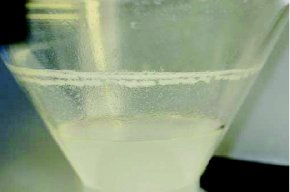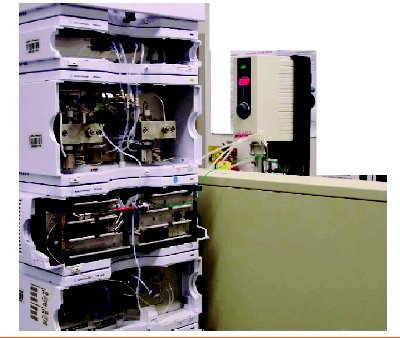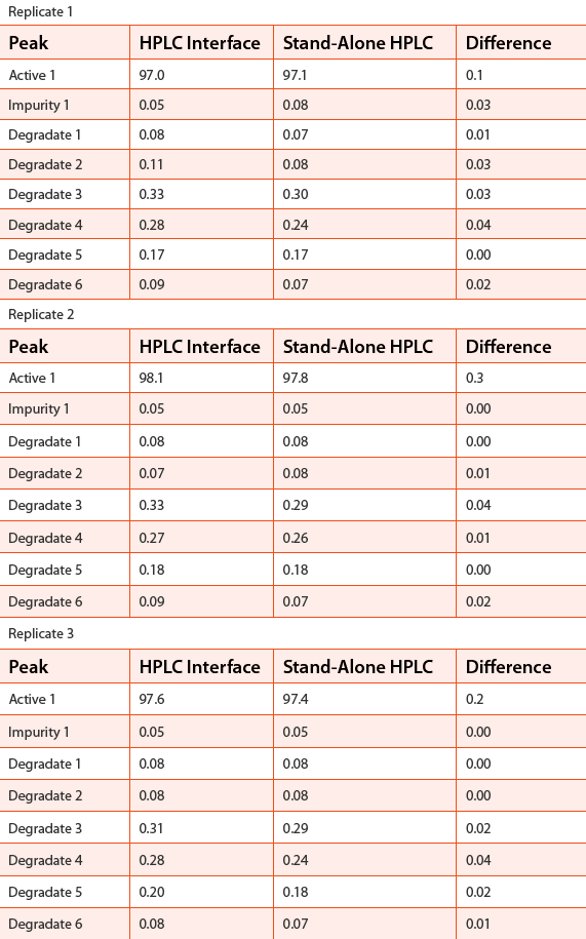Analytical Sciences, Pharmaceutical Sciences and Clinical Supply
Introduction
In today’s pharmaceutical environment, a generic, automated sample preparation method is imperative to meeting compressed analytical timelines. The use of automation equipment for content uniformity and/or composite assay samples allows an analyst to redirect and focus their efforts on data interpretation and analysis instead of routine wet chemistry techniques. Other benefits include higher throughput of samples, reduction of analyst variability, improved safe handling, reduction in solvent consumption, and increased capacity.

Although automated technologies are robust, instruments occasionally “error out” during sample preparation. Therefore, the use of these instruments during down-time may result in sample preparation failure and loss of samples. Within the early drug development space, samples may be limited and analysis of these samples may be crucial to the success of the project. However, improvements in the robustness of the automated sample preparation instruments have allowed for improved performance and are becoming common for the release of clinical batches and stability studies.
The development of a generic extraction process speeds automated method development timelines. After the generic extraction procedure is developed, in-line HPLC analysis can be utilized to fully automate the composite assay or content uniformity test. Following extraction and dilution of sample solutions to method concentration, the automated system can inject a portion of the sample directly to an HPLC for immediate analysis. The automated system is equipped with an injection valve which is coupled directly to a dedicated HPLC instrument. Utilized in conjunction with the generic sample preparation functionalities of the automated system, the HPLC interface allows front-to-back automation of composite assay or content uniformity sample preparation and assay. Front-to-back automation including sample preparation to in-line HPLC analysis has been successfully implemented and validated into automated workflows. The utilization of in-line HPLC analysis in conjunction with generic automated sample preparation methods has advantages of time savings due to the ability to perform overnight analysis and the capability to perform additional extractions as other samples are being prepared. This workflow can be particularly beneficial to unstable compounds that degrade readily in the dissolving solvent.
Merck scientists have leveraged their experience with these automated technologies conducting method development studies, which have improved the robustness of the generic extraction for several automated instruments. The generic automated extraction techniques have been developed and implemented in conjunction with in-line HPLC for fully automated composite assay and/or content uniformity methods on numerous projects. Examples of generic extraction techniques and in-line HPLC analysis will be shown for two solid dosage drug products.
Generic Extraction Procedure
Prior to exploration of generic conditions, three instrument modifications were made to the instrument design. All of these modifications were motivated by incomplete extraction of active from the dosage form in previous attempts and testing. The modifications included adding a serrated tip to the homogenization probe, adjustment of the blender bar to be in line with serrated tip and inclusion of an up/down cycle of the probe during the homogenization step. Picture 1 shows the current design of the homogenization probe, which was found to be a critical aspect for complete extraction.

Picture 1 - Final design of Homogenization Probe
An automated system has been used to prepare content uniformity and/or composite assay samples using generic extraction techniques developed across multiple drug products. The system automates labor intensive steps of sample addition, dilution, extraction, secondary dilution, filtration, vial preparation, and vessel cleaning involved in a typical wet chemistry extraction. The first step includes the addition of solvent to the vessel. The dosage form is then added to the vessel for extraction. Extractions in our experience generally are performed as follows: In step 1, samples are mixed 5 times for 5 seconds at 10,000 rpm. Step 2 mixing is 10 times for 10 seconds at 10,000 rpm. A second addition of solvent (25-500 ml) is executed to ensure all active is completely dissolved. A final homogenization, 2 times for 5 seconds at 10,000 rpm, is performed prior to the secondary dilution. Typically, the secondary dilution is preformed in a ratio of 1:10 but can be customized to meet any final target concentration.
Another critical factor for complete extraction of the solid dosage formulation is solvent addition. Both the volume of solvent addition and steps in which the solvent is added to the vessel impact extraction performance due to vessel dynamics. During original validation of the extraction workflow, a one-step solvent addition was used that led to a 5-10% low bias for one of the two actives when compared to the manual sample preparation. Picture 2 shows the visual observation revealing that an API enriched powder ring forms at the top of the vessel during the extraction process. In order to mitigate the low bias, a two-step solvent addition was added to the extraction process. The two-step solvent addition allows for the ring to be washed down and fully dissolved in the solvent as demonstrated in Picture 3.

Picture 2 - A ring of one active component formed during extraction process.

Picture 3 - Second addition of solvent added through circular rinse step.
As shown in Table 1, with the use of the one-step solvent addition, an average of 91.5% claim is obtained for active A while the two- step solvent addition yields 98.7% claim. The two-step method demonstrates results that are within +/-1% for both active components.
Table 1 - One-step solvent addition versus two-step addition results for fi ve content uniformity samples. One-step method results in low bias compared to manual methods.

The use of a two-step solvent addition increases the method time but enables a generic extraction procedure. These generic extraction conditions serve to optimize method development time while still maintaining equivalency with manual sample preparation methods. A second generic extraction method was developed to optimize for a faster extraction. The faster extraction method differs from the previously described approach by decreasing step 1 to 5 times for 5 seconds at 10,000 rpm and step 2 to 2 times for10 seconds at 10,000 rpm. The faster extraction method leads to a 16% reduction in the sample preparation time for each sample. The reduction of method time may seem negligible; however, with high sample volumes, tight timelines and multiple projects requiring a single piece of equipment, the time reduction is a significant benefit. Once a generic method is developed, throughput is further increased as the automated instrument allows multiple sample preparations to occur simultaneously.
A one-step solvent addition may be sufficient for the preparation of some lower potency doses as it can provide adequate sink condition for complete extraction. Therefore, each project may require further method development as needed but these generic techniques serve as a starting point. For low potency tablets, the shortest possible method should be used to reduce solvent waste and time. For high potency tablets, higher primary dilution volume may be needed to ensure sink conditions and the longer generic extraction method likely is required to break up larger dosage forms. When fully developed and validated, the generic extraction workflow can be used in combination with an HPLC interface to provide complete automation of content uniformity and/or composite assay samples.
In-line HPLC Analysis
In-line HPLC analysis works by redirecting the flow from the HPLC pump to an injector valve on an automated sample preparation instrument. The flow from the injector valve is carried to an HPLC column and bypasses the HPLC autosampler with the sample being injected directly after extraction occurs. There is capability to inject blanks, standards, and system suitability solutions for use during GMP testing and sample injections can be bracketed with standard injections at any place during analysis.
Initial attempts at validation of a content uniformity sample preparation and analysis of a dual active solid dosage formulation were unsuccessful due to high HPLC pump pressure, and fluctuations in the dwell volume that led to poor resolution and peak shape. The chromatography of a conventional HPLC chromatogram versus the in-line HPLC analysis is shown in Figures 1 & 2.

Figure 1 - Example of chromatography for dual active method of stand-alone HPLC

Figure 2 - Example of chromatography for dual active method of automation coupled to HPLC
Our current experiments suggest that the in-line HPLC has lower resolution and sensitivity for the active components as compared to conventional stand-alone HPLC. As a result, alterations to the apparatus were made to configure the automated-HPLC linkage to be as close as possible to stand-alone HPLC. The main alteration involved reconfiguration of the HPLC stack to move the column compartment and detector higher up in the instrument order. This alteration reduced the distance from both components to the HPLC pump and automation injector valve to minimize dwell volume. (Picture 4 shows the current HPLC stack set-up used in this workflow). Additionally, the tubing from the pump to column and from the column to detector was replaced to have identical length and bore of stand-alone HPLC. The use of the HPLC autosampler in combination with other variables led to distortions in the chromatography. Therefore, a final alteration involved re-plumbing of the injector valve to have the output flow directly to the HPLC column rather than pass through the HPLC autosampler which is not employed in the final workflow.

Picture 4 - Column compartment and detector positioned higher in HPLC stack
There are some limitations to use of the automation coupled to the in-line HPLC. First, the injector loop on the automated system must be changed to accommodate desired injection volume which can be inconvenient to the user. Secondly, the sample preparation time can be long as the automated sample preparation takes approximately 20-30 minutes per sample and prepares the sample serially. If chromatography involves high flow rate and short analysis time, mobile phase is wasted between sample preparations. However, one potential solution is to program the HPLC to run a flow gradient, using a slow flow after the chromatogram is collected with ramp-up in flow rate immediately prior to a subsequent injection. More recently, to mitigate mobile phase waste, a solvent recycler has been added to the workflow.
Validation of Coupled Methods
A content uniformity analysis was validated by comparing sample injections via the in-line HPLC analysis vs. conventional stand-alone HPLC for a dual active tablet for five sample preparations. Results in table 2 show a maximum of 1.2% claim difference between the active components assayed by in-line HPLC versus stand-alone HPLC. Additionally, injection of the blank solution showed no presence of active and the chromatography and system suitability on the interface was comparable to the stand-alone HPLC.
Table 2 - Comparison of two actives analyzed via HPLC interface and stand-alone HPLC

A composite assay and degradate test of a dual active tablet was validated using the in-line HPLC workflow for three sample preparations. Similar to the content uniformity validation, these samples were injected both through the HPLC interface and conventional stand-alone HPLC for comparison. Successful results were obtained with a maximum of 0.3% difference in the active component and 0.4% difference in the total degradates between the interface and stand-alone HPLC. Table 3 presents the individual results for each sample preparation and analysis.
Table 3 - Comparison of active component and degradate % claim analysis via HPLC interface and stand-alone HPLC

A recent success story supported by this workflow includes overnight assay to assess film coat defects in multiple individual tablets. While assay testing typically is performed on a composite sample of 5 or ten tablets in one sample preparation, assay on individual tablets of the composite was needed to explore variation in coating efficiency from tablet to tablet. With this approach, time required for extraction of samples was increased by a factor of 5 or more. To fully utilize capacity during non-working hours, the coupled HPLC approach was employed allowing for preparation of samples overnight and analysis of samples immediately following extraction.
In another workflow, the content uniformity analysis was employed during scale-up eff orts and allowed front-to-back testing of individual tablets overnight. In this testing, the key risk was poor uniformity in one layer of a particular potency of a bi-layer tablet, and acceptable uniformity had to be demonstrated before manufacturing and exploring additional potencies. Samples frequently arrived late in the day and results were needed the following day in order to proceed with further formulation processing. The utilization of this system allowed for complete analysis within the given timeframe, allowing progression to exploration/manufacture of additional potencies in an expedited manner.
Conclusions
In order to obtain equivalent results between manual and automated method sample preparations, numerous alterations were made to the automated system including both hardware and software modifications. Equivalency has been proven for two solid dosage formulations using the automated system for four different actives. Generic extraction conditions have been developed and validated by the analysis of two dual active compounds. The average run time for the generic procedure was shown to be approximately 25 minutes depending on use of slow or fast extraction method; however, the throughput increases using multiple samples.
Direct coupling of the automated system to a stand-alone HPLC with chromatography software allows for direct injection of sample producing a fully automated content uniformity or composite assay test. A time-saving component of the platform is evident as sample injection occurs immediately following extraction and additional sample preparation can be performed while the injection is underway. Additionally, the platform may be employed in situations involving unstable compounds which need HPLC analysis directly following extraction to avoid sample degradation as well as in situations where overnight analysis is required.
Acknowledgements
The authors would like to thank Li Li, Mark Mowery and Donald Chambers for their support and guidance during the completion of this work.
References:
- Kozlowski, B.; Kogan, J. “An Overview of Automated Tablet Processing Workflows”, Podium Presentation at Automation Seminar, 2011, Hopkinton, MA
- Kogan, J., John, C.; Kozlowski, B.; Everitt. J. “Development of a Generic Automated Sample Preparation Method for Conventional and Amorphous Solid Dispersions” Poster Presentation at PittCon, 2011, Atlanta, GA
Author Biography
Jessica Kogan is a Chemist at Merck & Co., Inc. supporting analytical activities related to drug product formulation and stability, with an emphasis on automated techniques. Jessica works to implement automated assay and dissolution methodologies for projects throughout the department. Jessica has a B.S. degree in Chemistry from The Pennsylvania State University and has her M.S. degree in Chemistry from Lehigh University.
Christopher T. John is a Sr. Research Chemist at Merck & Co., Inc. with ten years experience. Chris currently leads the activities of a specialty analytical group in the application of automation and spectroscopic technologies. These methods have played key roles throughout formulation development. Chris received his B.S. degree in chemistry from Muhlenberg College and has his M.S. degree from Lehigh University.
Brian Kozlowski is a Sr. Research Chemist at Merck & Co., with twelve years experience in the pharmaceutical industry. Brian is a member of an automation technology group in the Analytical Sciences Dept., spending a large portion of his efforts on evaluation and implementation of automation for analysis of tablets and capsules. Brian holds a B.S. degree in Chemistry from Mount St. Mary’s University and an M.S. in Pharmaceutical Chemistry from Lehigh University.